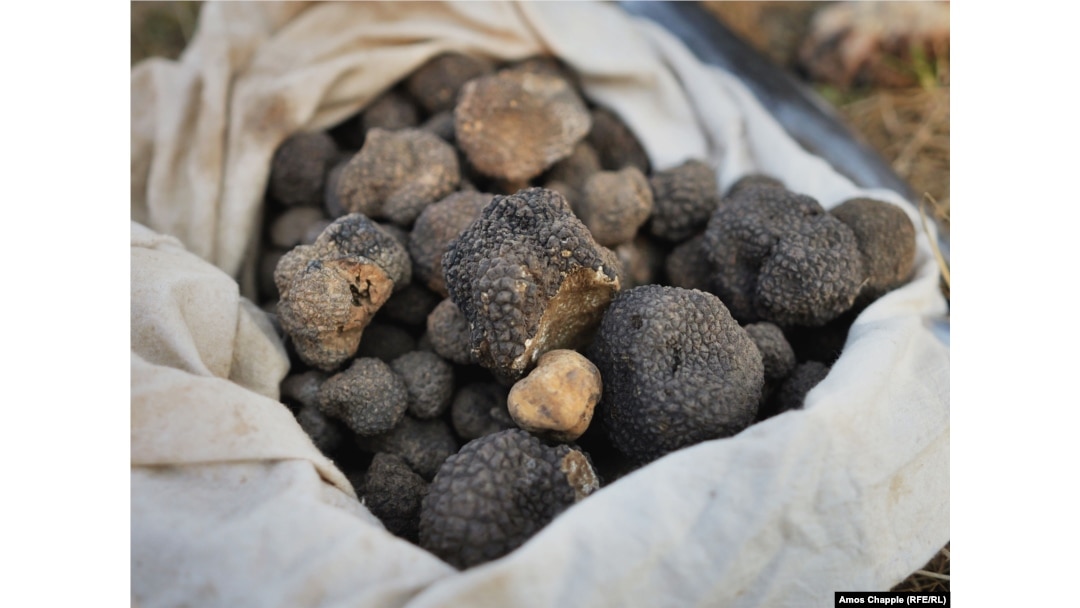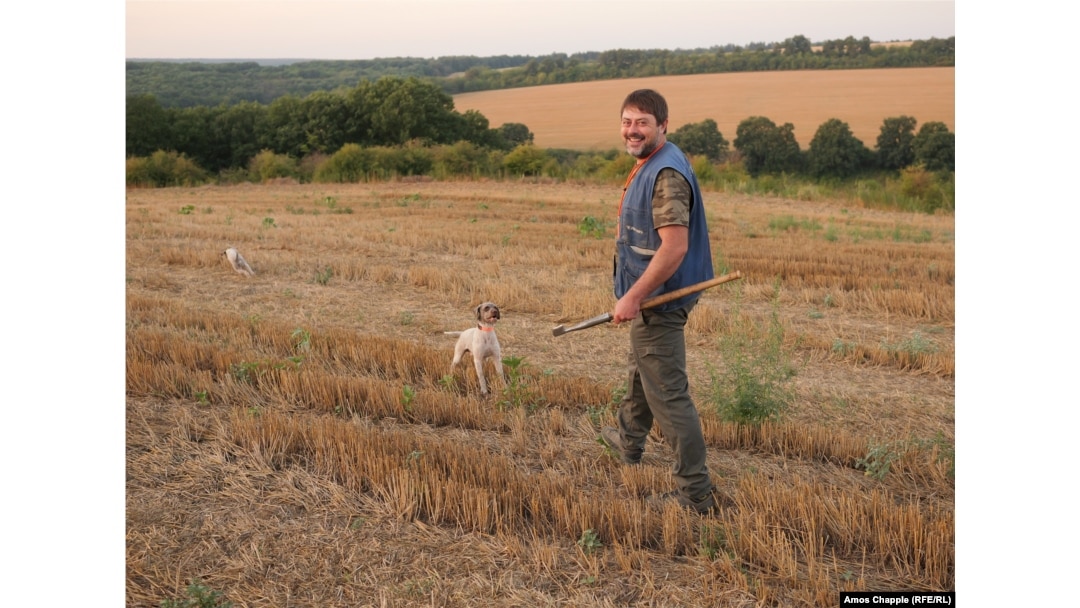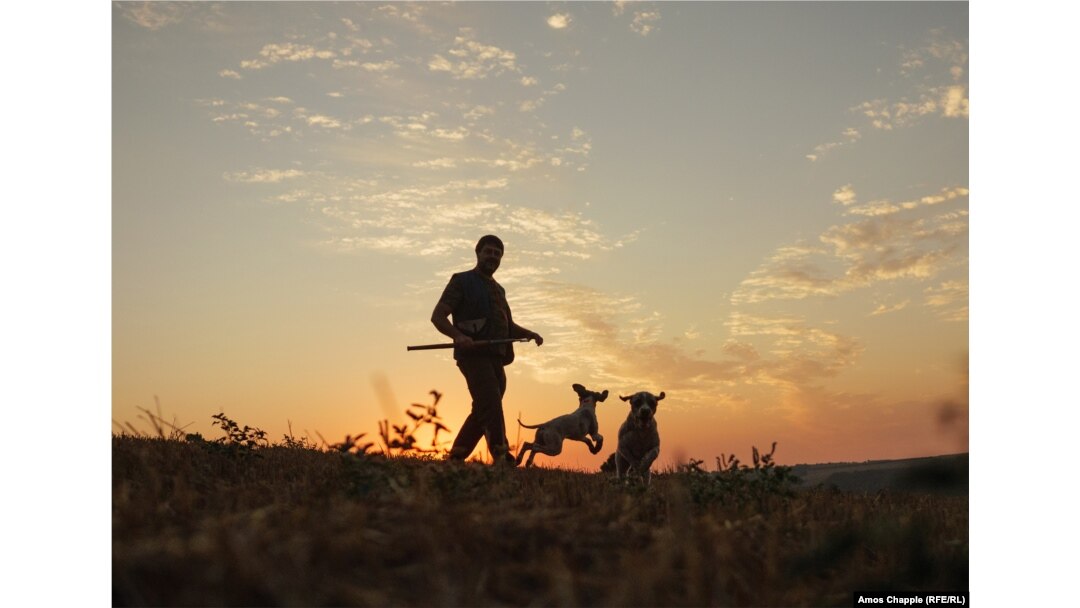In the forests of Bulgaria, thousands of truffle hunters and their dogs are supplying the Western market with ultra-luxury fungi.

This haul of fresh black truffles is as aromatic and tasty as any found in the famed truffle territories of northern Italy, but these were uncovered in the woods of Bulgaria.
According to a government report from 2020, Bulgaria is the world's largest producer of wild forest truffles, and the prized fungi provides a source of income for more than 20,000 people.
Bulgarian truffles are virtually unknown outside the country, and even many locals have never heard of the unregulated industry that operates in their forests. Just 1 percent of truffles uncovered in Bulgaria are sold on the domestic market, with the bulk going to Western Europe.

Ivaylo Penev
On August 9, truffle hunter Ivaylo Penev allowed RFE/RL to join a morning truffle hunt near the northeastern town of Silistra with his two dogs, brothers Diablo and Dino. He explained how the mysterious fungi are detected, what makes a perfect truffle, and how much they sell for.

Penev says some 50-60 percent of black truffles on the world market originate in the Balkans, mainly from sun-drenched regions of Bulgaria, Croatia, and Serbia.
"The Italians are selling our truffles and saying they're Italian," he claimed.
Although exact figures -- including those published by the Bulgarian government -- are impossible to verify, a black market in truffles is known to exist in Italy.
Balkan truffles are sometimes falsely presented as hailing from the northern Italian Piedmont region, where the delicacy fetches eye-watering prices. In 2021, some varieties of Italian truffles were being sold for nearly $10,300 per kilogram.
Penev hunts in forests near Silistra.
"In a good season, truffles can be found nearly anywhere," he said, even in the city parks of his hometown. But in dry spells, such as the current summer, hunters need to know exactly where to look.
The key to a successful hunt are dogs that can nose out the pungent fungi and deliver it unharmed to their owner. Penev favors the Italian Lagotto Romagnolo breed, described as "durable workers of excellent nose who root out truffles." Pigs can also be used, but the animals are harder to control and have a tendency to gobble up the fungi.
Penev uses a specially designed tool used for digging up truffles and cutting tree roots while doing minimal damage to the landscape.
Diablo and Dino race back and forth through the forest, snuffling at the air, before occasionally sinking their nose into the soil and digging, as Penev urges them on.
Truffles grow a few centimeters underground among roots of certain plants, including the hawthorn trees that grow in this forest. But the precious fungi in Bulgaria only appear where there is limestone present in the landscape, Penev says.
Large truffles like this are the most prized in the restaurant industry. Once cleaned of dirt and dog dribble, they are used as a garnish, shaved onto meals by a white-gloved waiter. Smaller or damaged truffles are used for flavorings in soups and other dishes.
Penev checks the quality of the fungus by smelling it -- good truffles have a knockout scent that is almost fruity and lingers like smoke. A single truffle can fill an entire room with its aroma within a few minutes.
Ripe truffles have the rubbery texture of a bouncy ball, and a maze-like pattern inside.
"Truffles are all over Europe, but you don't get the same flavor as here," Penev said. "It's about the sun. Only the Balkans get such sunlight."
In Bulgaria, a hunter will get around $103 per kilogram for a mixed selection of black truffles like these. In autumn, the hunt will intensify as the season for white truffles begins. White truffles are considered the holy grail of edible fungi. In Bulgaria, hunters last year were able to sell first-grade whites for $7,300 per kilo.
"There are people who travel through the whole [white truffle] season, and they can get up to 50 kilos of truffles, but you have to work nonstop, even through the night," Penev said, adding that the high prices have led to violent territorial disputes.
In some areas of Bulgaria, local hunters set up cameras in the forests to spot outsiders.
"They can flatten your tires, break your windows, poison your dogs…. Not many hunters are like this, but they are out there," he said.
In neighboring Serbia, two truffle hunters were shot dead in December 2020 over a dispute about truffle grounds.
Although the market for truffles within Bulgaria is tiny, the culinary world is beginning to take notice of "Thracian" truffles.
This truffle shop opened six months ago in central Sofia. The store owner, Feodor, says local interest in Bulgarian truffles is growing but remains low for economic reasons.
"Bulgaria is the poorest country in Europe, and this product, you can see, is kind of expensive," but tourists are increasingly coming to the Balkan country to sample both black and white Bulgarian truffles, he says.
Restaurants serving local truffles in Bulgaria are hard to find. This dish, served in La Capannina in central Sofia, sold shaved black truffle for the equivalent of $3.15 per gram. When the white truffle season arrives later this year, slices of that delicacy will sell for around $9.50 per gram.
Whatever happens with the truffle market in Bulgaria, Penev says he will continue to enjoy the process, out in nature alongside his dogs, as much as the payouts.
"I'm not about to become a millionaire," he said. "But it's a nice life."


